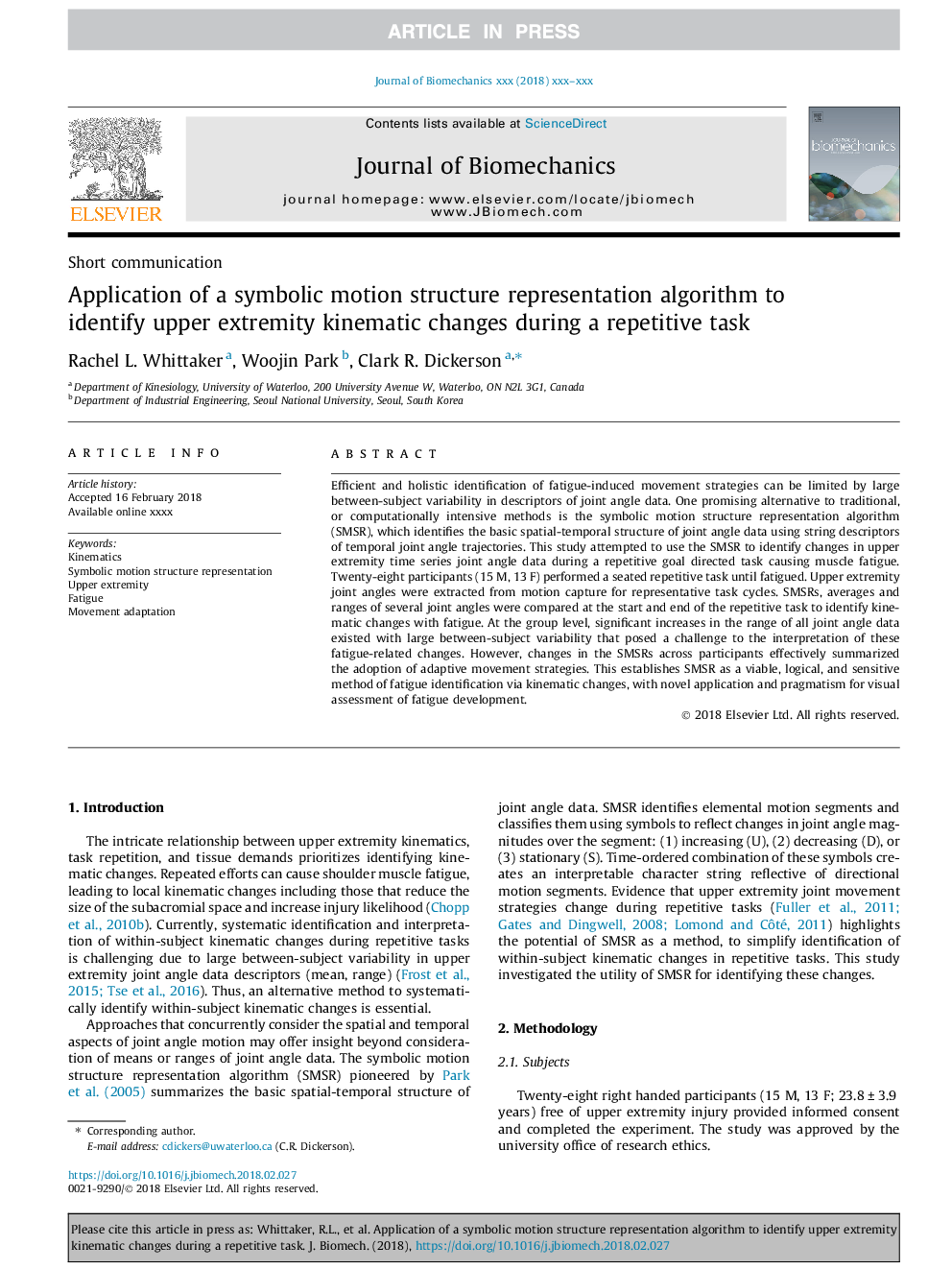| Article ID | Journal | Published Year | Pages | File Type |
|---|---|---|---|---|
| 7236360 | Journal of Biomechanics | 2018 | 6 Pages |
Abstract
Efficient and holistic identification of fatigue-induced movement strategies can be limited by large between-subject variability in descriptors of joint angle data. One promising alternative to traditional, or computationally intensive methods is the symbolic motion structure representation algorithm (SMSR), which identifies the basic spatial-temporal structure of joint angle data using string descriptors of temporal joint angle trajectories. This study attempted to use the SMSR to identify changes in upper extremity time series joint angle data during a repetitive goal directed task causing muscle fatigue. Twenty-eight participants (15 M, 13 F) performed a seated repetitive task until fatigued. Upper extremity joint angles were extracted from motion capture for representative task cycles. SMSRs, averages and ranges of several joint angles were compared at the start and end of the repetitive task to identify kinematic changes with fatigue. At the group level, significant increases in the range of all joint angle data existed with large between-subject variability that posed a challenge to the interpretation of these fatigue-related changes. However, changes in the SMSRs across participants effectively summarized the adoption of adaptive movement strategies. This establishes SMSR as a viable, logical, and sensitive method of fatigue identification via kinematic changes, with novel application and pragmatism for visual assessment of fatigue development.
Keywords
Related Topics
Physical Sciences and Engineering
Engineering
Biomedical Engineering
Authors
Rachel L. Whittaker, Woojin Park, Clark R. Dickerson,
